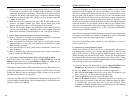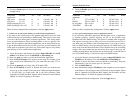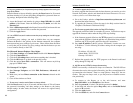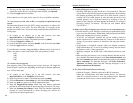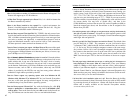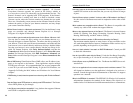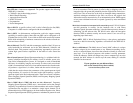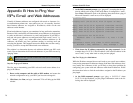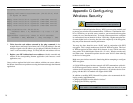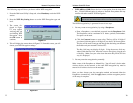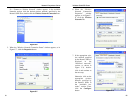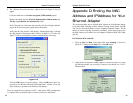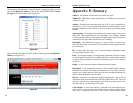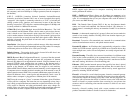
Wireless Cable/DSL Router
76
Network Everywhere
®
Series
75
Appendix C:Configuring
Wireless Security
An acronym for Wired Equivalent Privacy, WEP is an encryption method used
to protect your wireless data communications. WEP uses a combination of 64-
bit or 128-bit keys to provide access control to your network and encryption
security for every data transmission. To decode a data transmission, each point
in a network must use an identical 64-bit or 128-bit key. Higher encryption lev-
els mean higher levels of security, but due to the complexity of the encryption,
they may mean decreased network performance.
You may also have heard the term “40-bit” used in conjunction with WEP
encryption. This is simply another term for 64-bit WEP encryption. This level
of WEP encryption has been called 40-bit because it uses a 40-bit secret key
along with a 24-bit Initialization Vector (40 + 24 = 64). Wireless vendors may
use either name. Network Everywhere uses the term “64-bit” when referring
to this level of encryption.
Make sure your wireless network is functioning before attempting to configure
WEP encryption.
A 128-bit WEP encrypted wireless network will NOT communicate with a 64-
bit WEP encrypted wireless network. Therefore, make sure that all of your
wireless devices are using the same encryption level. All wireless devices com-
plying with the 802.11b standard will support 64-bit WEP.
In addition to enabling WEP, Network Everywhere also recommends the fol-
lowing security implementations:
• Changing the SSID from the default “wireless”
• Changing the WEP key regularly
Note: WEP encryption is an additional data securi-
ty measure and not essential for router operation.
Note: In order for WEP Encryption to be enabled, wireless functions must
first be enabled. Select Enable under the Wireless section before proceeding.
2. Write down the web address returned by the ping command (in the
example above: mail.msnv3.occa.home.com.). This web address is the web
address assigned to the IP address you just pinged. While the IP address of
“mail” could conceivably change, it is likely that this web address will not.
3. Replace your ISP’s abbreviated server address with this extended web
address in the corresponding Internet application (web browser, e-mail
application, etc.).
Once you have replaced the brief server address with the true server address,
the Router should have no problem accessing the Internet through that Internet
application.
C:\>ping -a 24.53.32.4
Pinging mail.msnv3.occa.home.com [24.53.32.4] with
32 bytes of data:
Reply from 24.53.32.4: bytes=32 time<10ms TTL=127
Reply from 24.53.32.4: bytes=32 time<10ms TTL=127
Reply from 24.53.32.4: bytes=32 time<10ms TTL=127
Reply from 24.53.32.4: bytes=32 time<10ms TTL=127
Ping statistics for 24.53.32.4:
Packets: Sent = 4, Received = 4, Lost = 0 (0%
loss),
Approximate round trip times in milli-seconds:
Minimum = 0ms, Maximum = 0ms, Average = 0ms



